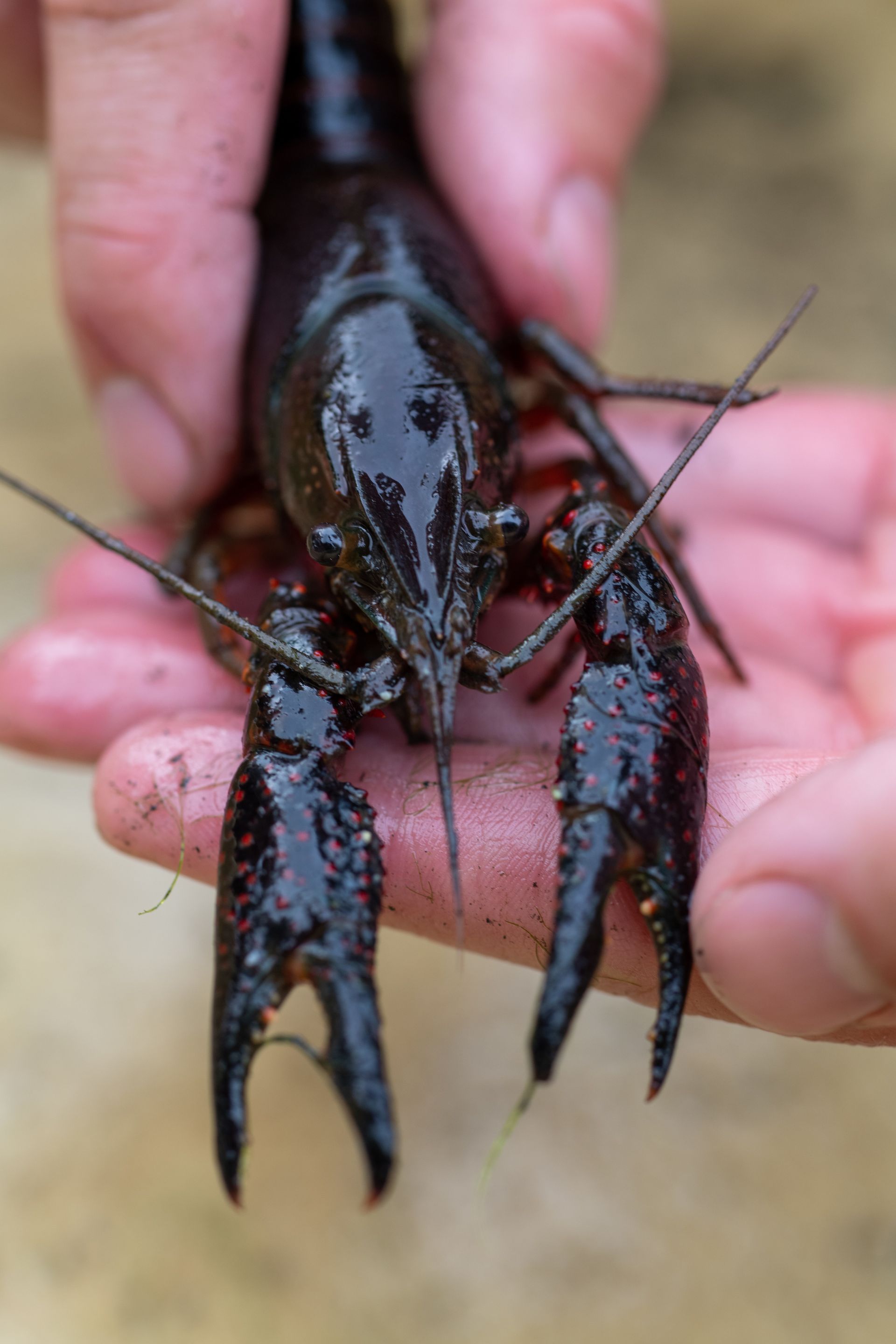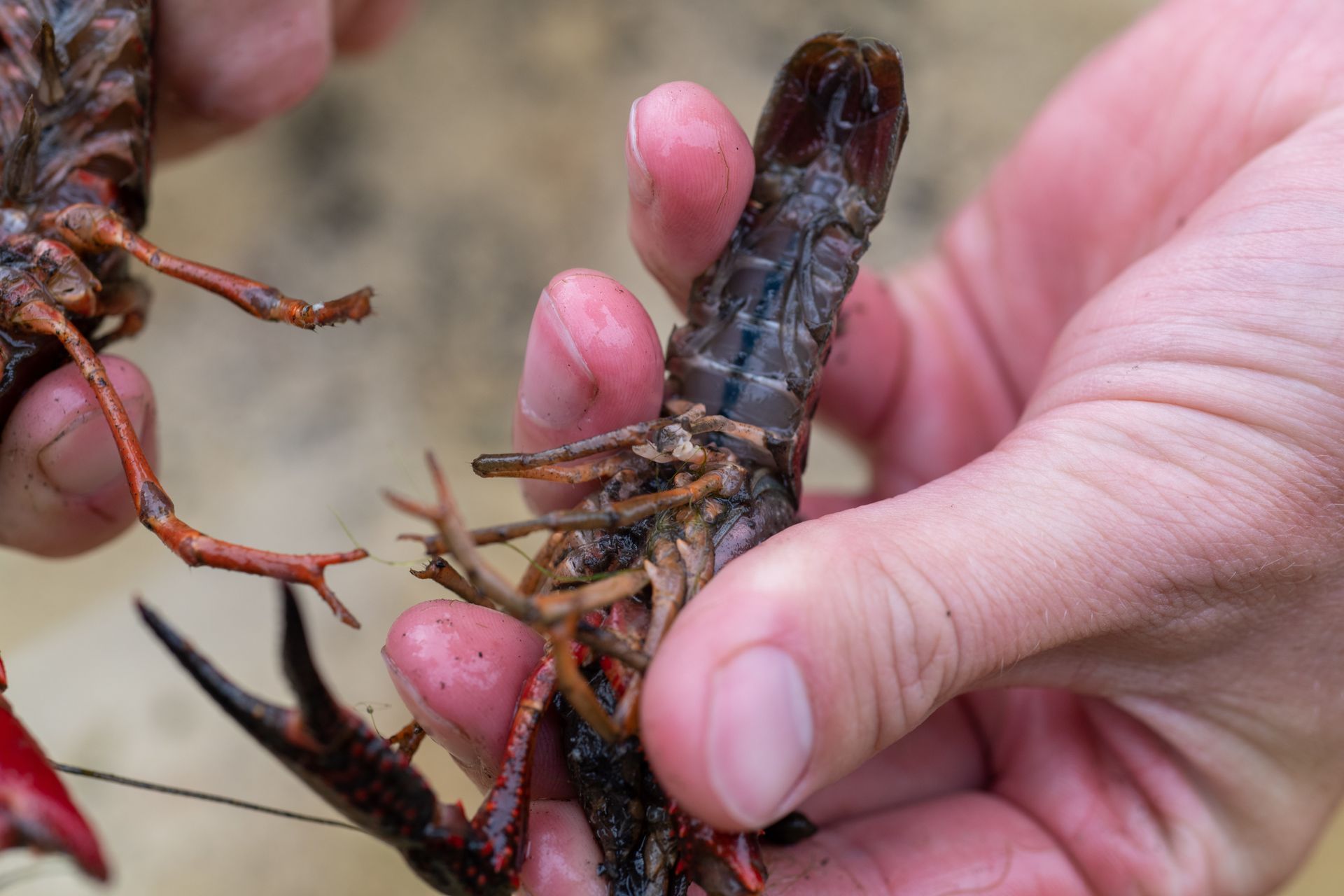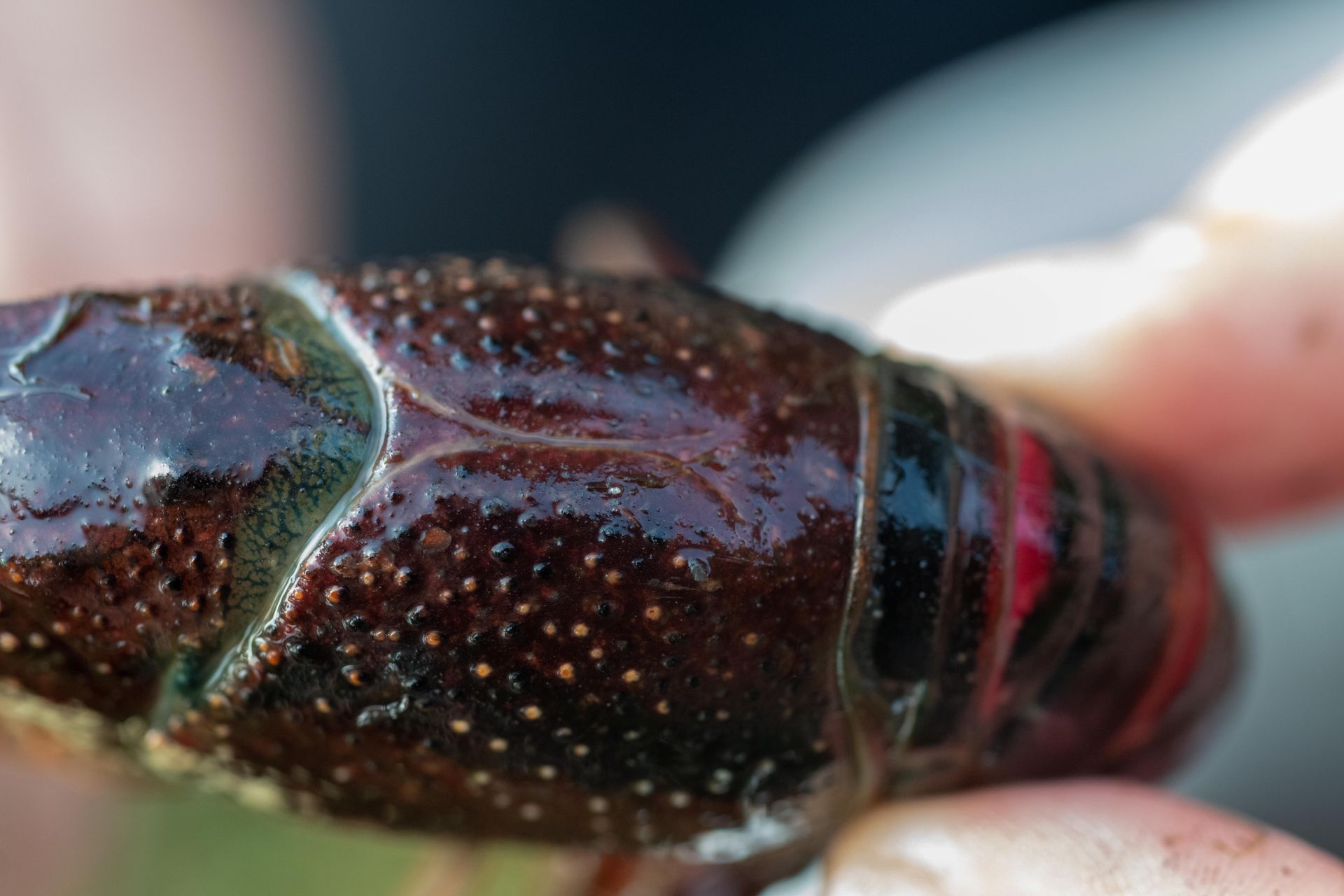Claws of Concern: The Invasion of Red Swamp Crayfish
When walking near a water body, it is not uncommon to see strange mounds of dirt or mud near the banks causing some to wonder how they formed. Others who are commonly near water may also find white exoskeletons that look like small lobsters that shed (molted). More than likely, the cause of both of these is crayfish. According to the Michigan Department of Natural Resources (DNR), Michigan has eight native species of crayfish/crawfish and two invasive species including the rusty crayfish and red swamp crayfish. The latter species is the focus of this article due to its more recent introduction into Michigan.
History
Within their native range, red swamp crayfish (Procambarus clarkii) are culturally important in cuisine and therefore the economy as recognized by the Huron River Watershed Council. This crayfish species originates from the Mississippi River drainage areas and the Gulf Coast of the United States. Michigan took steps to prohibit the sale of this species for bait in 2013 which expanded to prohibit possession for any reason in 2015. In 2017, the first established red swamp crayfish populations were identified in Michigan. The introduction of this species has many considerable avenues including aquaculture trade, pets, bait, or laboratory release. It is also speculated that the species was released into Lake Erie to create a harvestable population for consumers. The species has also been called the Louisiana crayfish/crawfish or tri-color ghost lobster.
Current Status
According to the Michigan DNR, the red swamp crayfish is listed as an invasive. This species is prohibited to possess, sell, import, or transport in Michigan, regardless of purpose. The range of this species has expanded to several states from California to Virginia and reaching every continent aside from Australia and Antarctica. This species is so robust that the Michigan DNR describes it as “one of the most widespread invasive crayfish on the planet”.
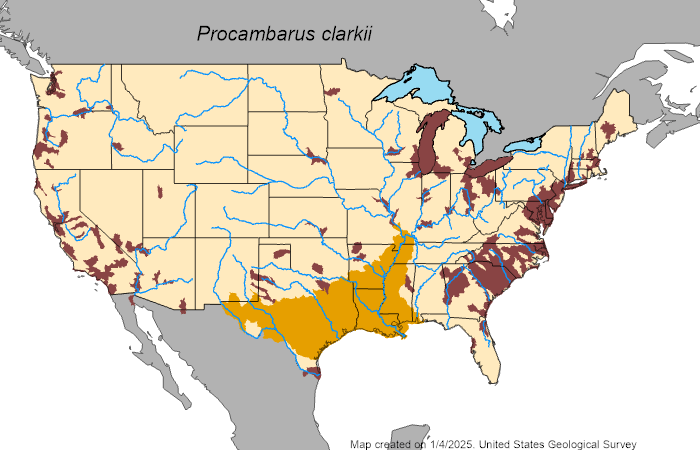
Characteristics
This crustacean looks like a small lobster, typically ranging from 2.2 to 4.7 inches long (including the claws) with a bony exoskeleton. They can be identified by their dark red color with bright red spots, elongated heads, and a pointed nose (rostrum). However, coloration is not the best way to identify this species due to domestic breeding for different color patterns and many juveniles lacking the characteristic red, sometimes even looking gray. It is best to use other characteristics for identification purposes. When looking at the claws, this species tends to have a curved ‘saber-like’ shape with red bumps, however, coloration may change with the pet trade. There is a characteristic black line on the underside of the tail for this species as well. Additionally, the back of the crayfish has two lines (areola) that touch just before the tail according to the Great Lakes Almanac to Invasive Crayfish. Using multiple identifiable characteristics can lead to a positive identification of this invasive. This species and other crayfish communities can be indirectly located near water by recognizing their shallow chimneys in which they burrow creating large mounds of displaced substrate with a hole in the center.
Look-alikes for this species include the devil crawfish and white river crayfish, however, neither species displays the characteristic red bumps of the red swamp crayfish. The devil crawfish is mostly tan with red highlights in various places according to MSU Extension. The white river crayfish has a similar color ranging from tan to rust red with black or white bumps on the claws. In contrast with the red swamp crayfish, this species has an open areola on the back. Additionally, the white river species has an open areola on the back.
Conservation
As secondary burrowers, this species of crayfish is often found in areas with permanent freshwater feeding on snails, fish, amphibians, and plants. The presence of this species can be cause for greater conservation concern as they aggressively outcompete native crayfish and limit growth of their prey populations at the most vulnerable stages. Additionally, these crayfish can help spread parasites and diseases to native populations like crayfish fungus plague according to MSU Extension.
Red swamp crayfish can burrow into the substrate to escape drought, cold temperatures, and predation making them very robust. This burrowing is beneficial in helping the species survive and persist in non-native habitats like Michigan winters. In fact, they are suspected to survive being flushed down a toilet going into wastewater treatment plants due to their high prevalence in these areas. In addition to their ability to cope with changing conditions, they also can travel two miles on land for a new habitat as determined by the Tip of the Mitt Watershed Council. Reaching sexual maturity in two months, females can reproduce up to twice per year with up to 600 eggs per clutch, making eradication difficult. The burrowing habits of this species may also lead to cyanobacteria blooms and eutrophic conditions according to the Invasive Species Centre. Cyanobacterial blooms can occur when the crayfish feed on aquatic plants and fish which help control the bacteria. This creates a feedback loop in which more toxins are released, limiting the oxygen present, therefore leading to the suffocation of organisms in the water. In areas with high population density, the creation of chimneys along the shore also contributes to the erosion of banks.

The Roth Laboratory at Michigan State University is one of the lead investigators in identifying effective control efforts for this species. This lab uses techniques like telemetry and trapping for ecological monitoring to help identify the impacts of treatments on populations. Chemical treatments and habitat modifications to support native crayfish populations are currently being explored in impacted landlocked sites of Michigan.
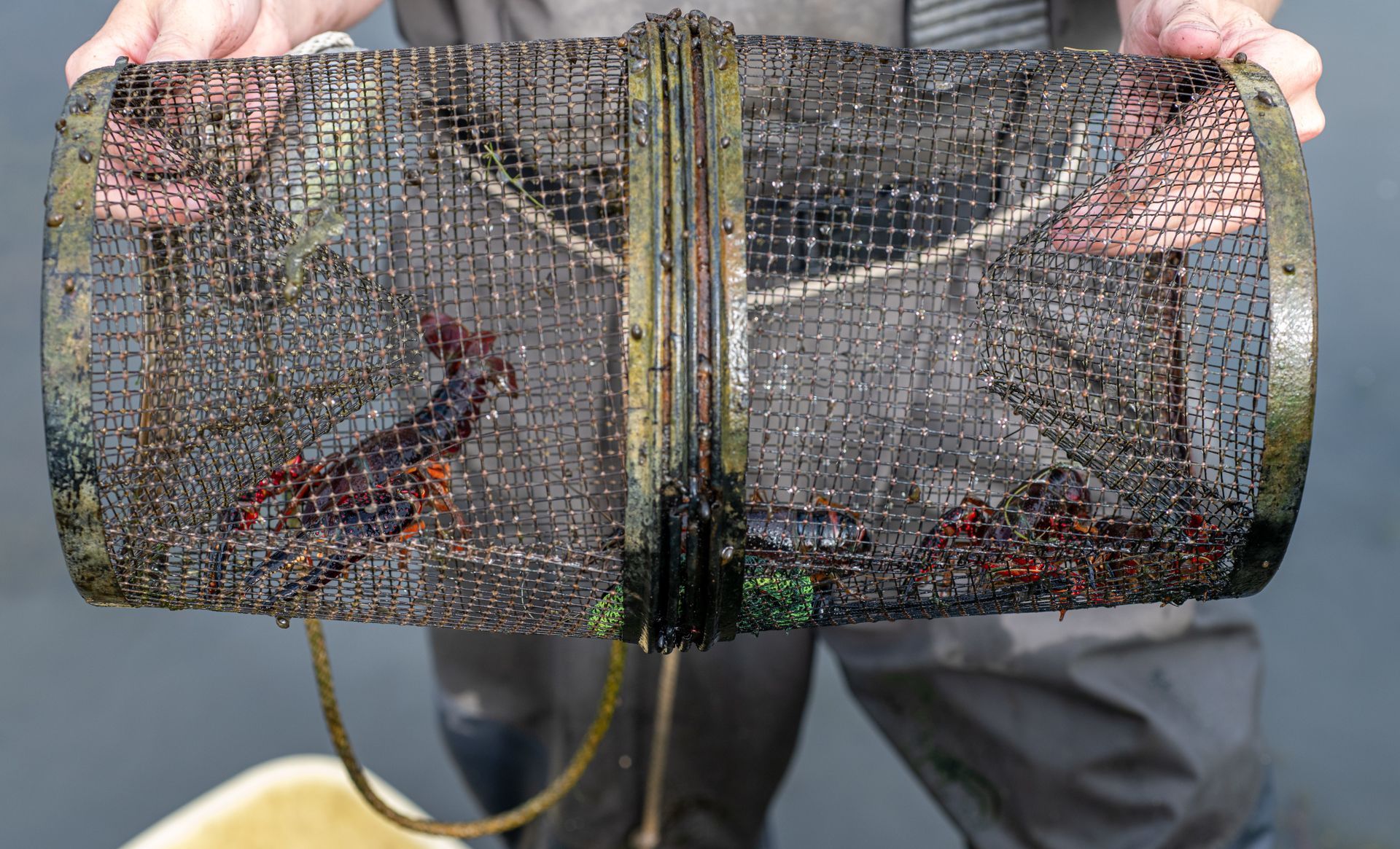
Get Involved
If you find a red swamp crayfish, it is recommended to report the information with photos to the DNR Fisheries Division at 734-780-5571 or QuebedeauxK@michigan.gov. Invasive species and details of findings can also be reported to the Midwest Invasive Species Information Network (MISIN).
A great way to help prevent the spread of aquatic species is to clean, drain, and dry boats before moving to new lakes to prevent aquatic hitchhikers. One effort to help control or prevent the spread of this invasive could be to support habitat for predators like wood ducks. This Saturday, January 25th, our On the Ground program will be at Shiawassee River State Game Area with volunteers to maintain wood duck boxes. We will be doing a similar project on February 15th at Maple River State Game Area, if you are interested, sign up here!

